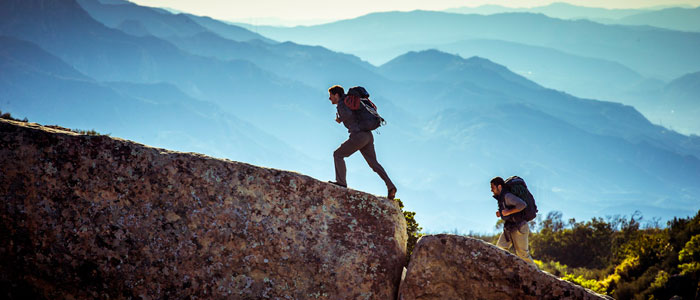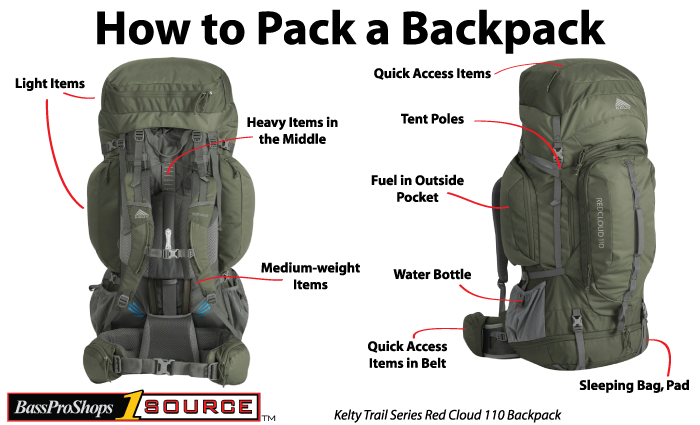
You've planned for weeks, taken time off work and organized all your gear for several days of hiking through the wilderness. Now comes the moment of truth: fitting it all in your backpack.

We spoke with Andrew Day, the Senior Product Manager for Packs at the outdoor company Kelty. Day shared his most important tips for packing a backpack efficiently and effectively.
While there's certainly more than one way to load a backpack for hiking, these simple tips will make the process easy, prioritize items for access and help the pack ride comfortably on your back.
![]() Watch our video with tips for packing a trail pack or backpack.
Watch our video with tips for packing a trail pack or backpack.
 |
Click here: to open a larger view the how to pack a backpack diagram.
1. Heavy in the Middle
"Load the most dense items, such as water and food, in the middle of the pack and as close to your back as possible to keep the center of gravity near your body," Day said.
2. Use the Sleeve
Most backpacks are outfitted with a sleeve for a water reservoir. "Use it as an efficient way to store a days worth of water close to your body," he said.
3. Fill the Gaps With Soft Items
Clothing and other light, soft items can be used to fill in the gaps around harder, bulkier items. Even if you use a stuff sack to keep clothing together, consider pulling a few pairs of socks and shirts out to stuff into nooks and crannies.
4. Make Accessories Accessible
"Pack things that you need on trail in convenient locations such as front and side pockets," Day said. These items vary depending on the destination and weather, but snacks, sunglasses, rain gear, hats and gloves are some examples of be available for quick access.
5. Organize Electronics
Along with other fragile items, electronics ride well in the top pocket.
6. Utilize the Waist Belt
Most modern packs have pockets in the waist belt suitable for a camera, sunscreen, lip balm, phone and other important, must have equipment.
7. Keep Water Filter Convenient
While it might not be needed during a day hike, you never know when you’ll find a great water hole to top off the bladders. It's great to have the water filter at the top of the pack (or in an external pocket).
8. Get to Know Your Pack's Features
Panel loaders allow for access into the depths of pack. Some packs have very large external pockets that can carry a large portion of clothing.
9. Segregate Fuel
Fuel can leak, and when it does, can foul food and clothing. Store it in an external pocket if possible or, at very least, double bag it.
10. Sleeping Bag at Bottom
Sleeping bag is nice and light and fills the bottom of a pack well. That's what this space is made for!
11. Separate Tent Poles From Tent
Simply remove tent poles from the main tent bag. Strap the poles on the outside of the pack. The tent will pack easily around other gear inside the pack.
12. The Key Fob
Almost every pack on the market has an attachment point for a key ring, often in the top pocket. Use it for a spare key or your primary set to save a call to AAA.
![]() Watch video with tips on how to pack a trail pack or backpack for hiking.
Watch video with tips on how to pack a trail pack or backpack for hiking.
- 16121 views

